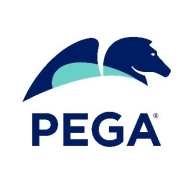


Find out what your peers are saying about Camunda, Automation Anywhere, SAP and others in Business Process Management (BPM).
The consultants are fine, however, reliance on single experts for modules can be risky.
AWS provides the best support, followed by Microsoft, and then Google.
They really understand deeply and in detailed fashion the solution.
They provide better support for the enterprise edition.
I never needed support from the platform standpoint, but if additional features are required, we have regular meetings with the product team for feedback.
The technical support from Pega is very low, rating a one or two out of ten.
Pega's technical support team is very helpful.
For user scalability, it is a matter of licenses, while functional scalability is supported and easy to implement.
ARIS BPA has high scalability and wide scalability for any enterprise or organization.
Camunda offers a high level of scalability, especially when using its SaaS model, which manages and scales implementations automatically.
ECS and Fargate make horizontal scalability very easy.
They have that REST layer, REST APIs layer that makes it easy to integrate and make it part of a microservices ecosystem and APIs.
Currently, big banking providers and insurance providers, even the members for healthcare payers, are using more than millions of operations on a daily or weekly basis.
The stability of ARIS BPM is quite strong, rated eight out of ten.
There haven't been any significant outages in my experience with Camunda.
We were not really concerned about the performance on the process itself because it was super simple, super straightforward, and it did not present itself as a bottleneck, nor did we feel it was adding additional time in the execution.
Software AG should focus on developing AI models for ARIS BPA on-premises, particularly in user interfaces, as well as creating predefined business processes for common areas such as HR and finance.
Software AG could improve this by making the database more open.
ARIS BPA needs to be more accurate when generating documents.
More open documentation would be beneficial to understand the deployment process better and facilitate easier setup.
There is an issue where, in some situations, I need to scale up by observing both CPU and memory usage of containers, yet under the current options available at Amazon, this is not possible.
Since they made the move to cloud deployment in a more SaaS-oriented way, they do not invest too much in the community version.
Pega introduced Constellation, which allows a user to build a more engaging visual experience.
For customer interactions, while the Pega Platform's AI-based decisioning and predictive analytics are great, the Process AI is not very popular yet, as it works on process data rather than customer data.
My learning curve in robotics has been challenging.
AWS pricing is very competitive compared to Azure and cheap compared to Google.
There is a licensing cost for using the SaaS model and Enterprise edition of Camunda.
Pega is priced higher than open-source options like Flowable but is suitable for large-scale industries like banking and insurance.
The pricing is expensive, and this is an issue.
From a licensing perspective, it is higher than the competition.
ARIS BPA is a tool to build models and frameworks for organizations or reengineer business processes from both functional and business perspectives.
The maintenance capabilities of ARIS BPM and the strong underlying database are particularly valuable.
The most important aspect of business analysis is simplification.
EC2 makes scaling horizontally incredibly easy, especially when working under the ECS service.
Camunda's support for BPMN 2.0 is a great advantage because it allows us to have a common language to discuss technology and business in the same perspective.
The biggest difference between Camunda and Bonita might be that Camunda is simpler and more flexible for setting.
Management capabilities such as dashboards.
Pega Platform is excellent for enterprise-level solutions with integrations to entire systems, including case management, service orchestration, CRM, decision-making capabilities, digital process automation, and AI-driven functionalities.
| Product | Market Share (%) |
|---|---|
| Camunda | 16.0% |
| Pega Platform | 5.2% |
| ARIS BPA | 4.1% |
| Other | 74.7% |



| Company Size | Count |
|---|---|
| Small Business | 32 |
| Midsize Enterprise | 8 |
| Large Enterprise | 47 |
| Company Size | Count |
|---|---|
| Small Business | 42 |
| Midsize Enterprise | 15 |
| Large Enterprise | 29 |
| Company Size | Count |
|---|---|
| Small Business | 9 |
| Midsize Enterprise | 15 |
| Large Enterprise | 68 |
ARIS is the market-leading solution for professional business process management and modeling. Whether you want to document the "as-is" state of your operations for quality or certification reasons or design the "to-be" in terms of continuous improvement in your transformation program, ARIS is the best choice for establishing a single source of truth regarding all process excellence topics in your organization. It is for any organization looking to digitally transform their business, increase operational excellence and customer experience and ensure compliance in execution. ARIS helps you to make the most out of your processes with Process Mining, Risk & Compliance Management, RPA and much more.
What makes the difference?
ARIS is the market-leading solution for any organization and ideally suited to digitally transform the organization, increase operational excellence and customer experience and ensure compliance in execution.
Camunda revolutionizes process orchestration by enabling seamless automation and integration with AI, human tasks, and existing systems while ensuring security and governance.
Built for collaboration between business and IT, Camunda empowers organizations to manage complexity, boost efficiency, and maintain competitive advantage. With a clientele of over 700 top organizations like Atlassian, ING, and Vodafone, Camunda is a trusted partner in designing, orchestrating, automating, and refining critical business processes to accelerate digital transformation. Its open-source nature, ease of use, and REST API integration make it a versatile choice for various needs.
What are Camunda's key features?In banking, Camunda automates processes and manages transactions, while in telecommunications, it optimizes service orders. Governmental and public sectors benefit from workflow automation. Organizations often use either the enterprise edition or the open-source version to create APIs and manage business rules effectively.
Pega Platform provides flexible business process management with a focus on rapid application development and automation through a low-code approach, enhancing efficiency across sectors.
Pega Platform is renowned for its ability to streamline operations with robust automation features, including robotic process automation and decision-making capabilities. Its intuitive interface and workflow management contribute to a reputation for enhancing business processes. Although users face challenges with integration limitations and high licensing costs, they benefit from rapid deployment and efficient process adaptations. The unified architecture reduces complexity, while case management and integration services support digital transformations in sectors such as banking, insurance, and healthcare.
What are the key features of Pega Platform?In industries like insurance, banking, healthcare, and government, Pega Platform is implemented to automate diverse workflows, supporting initiatives from claims processing to customer onboarding. Enterprises use Pega for case management and digital transformations, valuing its out-of-the-box integrations and real-time reporting capabilities to boost operational automation and enhance customer experiences.